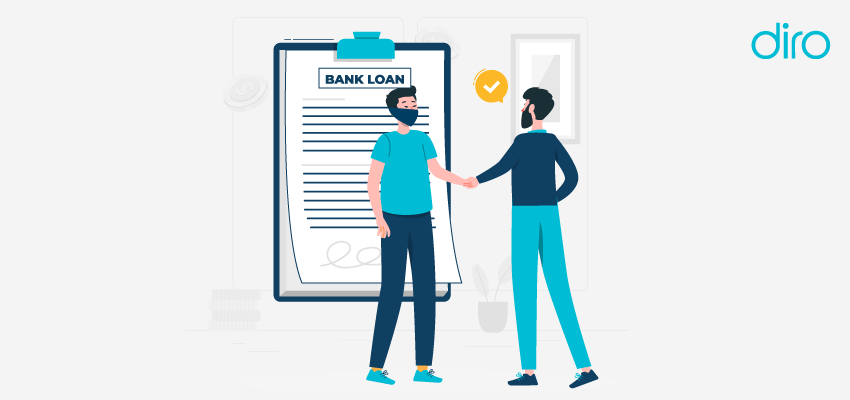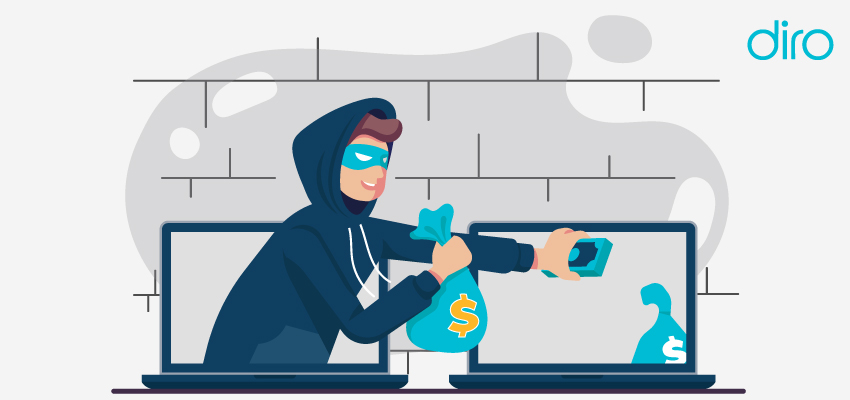What is Loan Fraud Definition? – Steps to Avoid It

Loan fraud is one of the most common fraud types, it involves practices that aim to secure loans using false information or secure a loan with a plan not to pay. Fraudsters intentionally misrepresent their financial situation or the purpose of a loan to obtain funds they are not entitled to receive.
This is achieved by falsifying documents, misreporting income, or methods like identity theft. Loan fraud can be harmful to individuals, financial institutions, and businesses.
With increased digital commerce and banking, the risk of loan fraud has increased tenfold. In this guide, we’ll talk about loan fraud, the different types, the impact it can have on businesses, and steps that can be taken to prevent it.
How Does Loan Fraud Happen?
Loan fraud can happen in various ways. But, the leading cause of loan fraud is the gaps in the ID & document verification process. Some of the most common scenarios include:
1. Falsified Information
Each loan has certain criteria that individuals & businesses have to meet. Bad actors can falsify key documents or provide incorrect details in loan applications. This includes fake income documents, forging tax returns, or providing false personal information to meet loan qualification criteria.
The fake documents lead the lender to believe that the borrower meets the loan requirements and thus the loan is approved.
2. Identity Theft
Identity theft is another common factor behind loan fraud. Bad actors buy or steal personal information, such as Social Security numbers, birth dates, and bank details, to apply for loans in someone else’s name.
Once the loan is approved, the thief disappears with the money, leaving the victim with the debt.
3. Collusion Between Borrower and Lender
There are instances where loan fraud happens through collusion between a borrower and an employee within a financial institution.
The employee may approve a loan that does not meet the required criteria in exchange for a share of the funds. This type of loan fraud is extremely harmful to financial institutions as it hurts the trust between financial institutions and clients.
4. Manipulation of Appraisals and Valuations
Fraudsters may inflate the value of collateral, such as property or vehicles, to qualify for larger loans. By presenting a higher valuation, they convince the lender to offer a higher loan amount than would otherwise be granted.
Once the loan is approved, the fraudster might default, leaving the lender with insufficient collateral to cover the debt.
What are First-Party, Second-Party, and Third-Party Loan Fraud?
Loan fraud can be categorized into 3 categories. Here’s a simple breakdown:
1. First-Party Loan Fraud
First-party loan fraud occurs when the actual borrower is the one committing fraud. Here, the borrower intentionally provides false information about their finances or identity to secure a loan.
For example – the borrower may show inflated income, underreport their debts, or create fake documents to meet loan requirements.
Common examples include:
- Falsifying pay stubs to exaggerate earnings.
- Misrepresenting the intended use of the loan (e.g., applying for a business loan but using the money for personal expenses).
- Submitting forged documents like tax returns or bank statements.
2. Second-Party Loan Fraud
Second-party loan fraud is only possible if there’s a “middleman” who assists the borrower in loan fraud. The middleman usually works with the financial institution and submits fake information on the borrower’s behalf. In some cases, the accomplice could be a friend, family member, or an employee within the financial institution.
An example might be someone asking a friend to cosign on a loan, knowing full well that they have no intention of paying it back, leaving the cosigner with financial liability.
3. Third-Party Loan Fraud
Third-party loan fraud is the most sophisticated type of fraud and often involves identity theft or complex schemes. In these cases, fraudsters use the personal information of unsuspecting individuals to apply for loans without their knowledge. The victim typically doesn’t find out about the fraud until they start receiving collection notices or their credit score is affected.
Another example of third-party fraud is “loan flipping,” where fraudsters persuade vulnerable individuals to repeatedly refinance their loans, stripping them of equity while charging excessive fees.
Types of Loan Fraud
There are multiple types of loan fraud, and having proper knowledge about them could prevent you and your businesses from falling into these traps. The most common types of loan fraud include:
1. Mortgage Loan Fraud
Mortgage fraud is one of the most common types of loan fraud. This occurs when someone falsifies information during the mortgage application process to obtain financing. This can involve overstating income, lying about employment, or inflating property values. Leanders can verify bank statements to prevent fraud.
2. Personal Loan Fraud
Personal loan fraud is when a borrower provides false personal details, such as a fake address or incorrect financial information, to secure a loan. These loans are often unsecured, meaning the lender has little recourse if the borrower defaults.
3. Auto Loan Fraud
Auto loan fraud involves manipulating the process of securing financing for purchasing a vehicle. This could involve falsifying employment or income data or inflating the value of the car being purchased.
4. Business Loan Fraud
Business loan fraud can take several forms, from misrepresenting business financials to securing a loan to use the loan for purposes other than what was disclosed to the lender. In some cases, businesses may overvalue assets or inflate income to appear more creditworthy.
5. Online Loan Fraud
With the rise of digital lending platforms, online loan fraud has become increasingly common. Scammers can exploit loopholes in online verification systems to secure loans or steal personal information from applicants for fraudulent purposes.
What’s the Impact of Loan Fraud on Businesses?
Loan fraud can have significant and long-lasting impacts on businesses, particularly financial institutions. Some key consequences include:
1. Financial Losses
The most immediate impact of loan fraud is financial loss. When loans are granted based on fraudulent information, the likelihood of default increases, leaving lenders with unpaid debts. This can strain a company’s financial resources and affect its bottom line.
2. Damage to Reputation
When a business becomes associated with loan fraud, either as a victim or a perpetrator, it can suffer severe reputational damage. Customers may lose trust in the organization, fearing that their personal information is not secure, or that the institution does not conduct proper due diligence before approving loans.
3. Legal and Regulatory Consequences
Companies that fail to adequately prevent loan fraud can face legal action and regulatory penalties. Financial regulators impose strict guidelines on lenders to ensure they are taking appropriate steps to verify the accuracy of loan applications. Failure to do so can result in hefty fines or even the suspension of lending licenses.
4. Increased Operational Costs
Detecting and preventing loan fraud requires significant investment in advanced technology, such as fraud detection systems, and additional personnel to verify loan applications. These added expenses can increase operational costs for businesses, eating into their profitability.
Common Steps to Avoid Loan Fraud
Both individuals and businesses can take proactive steps to reduce the risk of falling victim to loan fraud. Implementing these strategies can help safeguard finances and protect creditworthiness.
1. Protect Personal Information
One of the most important steps in avoiding loan fraud is to keep personal information secure. Identity thieves often use stolen data, such as Social Security numbers or bank account details, to fraudulently apply for loans.
Be cautious about sharing sensitive information, especially online or over the phone. Use strong passwords for online accounts, and avoid using unsecured Wi-Fi networks when accessing financial information.
2. Verify Lenders’ Credibility
Before applying for a loan, it’s crucial to ensure that the lender is reputable. Research the institution thoroughly, check online reviews, and ensure that it is registered with the appropriate regulatory bodies.
Scam lenders often operate online, preying on vulnerable individuals by offering too-good-to-be-true loan deals or pushing applicants to share personal details upfront.
3. Double-Check Loan Documents
Always read the fine print before signing any loan agreement. Make sure all the information is accurate, and don’t hesitate to ask questions if something seems unclear or suspicious.
Fraudulent lenders often bury hidden fees or unfavorable terms in loan agreements, hoping borrowers will overlook them. Double-checking everything from the loan amount to interest rates and repayment terms can help you avoid costly mistakes.
4. Monitor Credit Reports Regularly
Regularly monitoring your credit report can help you catch signs of fraud early. If a loan has been taken out in your name without your knowledge, it will show up on your credit report.
Most credit agencies allow you to check your report for free once a year, and you can use this opportunity to review your financial history and dispute any unfamiliar entries.
5. Invest in Fraud Detection Tools
For businesses, investing in advanced fraud detection tools is essential. Many financial institutions use software that can flag suspicious behavior, such as multiple loan applications from the same IP address or inconsistencies in financial documents.
Businesses should also implement rigorous internal controls and background checks to ensure that both employees and borrowers are trustworthy.
6. Be Skeptical of High-Pressure Tactics
If a lender or broker is pressuring you to take immediate action or sign documents without giving you time to review them, it’s a red flag. Fraudsters often use high-pressure sales tactics to manipulate individuals into making impulsive decisions.
Legitimate lenders will allow you to take your time, ask questions, and seek advice from a financial advisor if necessary.
7. Educate Employees and Clients About Loan Fraud
For businesses, raising awareness about loan fraud is a critical preventative measure. Training employees to recognize red flags and stay vigilant during the loan approval process can prevent insider fraud and stop fraudulent loans before they are approved.
Similarly, educating clients about common fraud schemes and how to avoid them fosters trust and reduces the likelihood of loan-related scams.
8. Be Cautious with Cosigning
If you’re asked to cosign a loan, be cautious. Second-party loan fraud often involves a friend or family member who convinces someone to cosign under false pretenses, only to default on the loan later.
Before agreeing to cosign, ensure that the borrower has a reliable repayment plan, and understand that you will be legally responsible if they fail to make payments.
Conclusion
Loan fraud is a serious issue that can have devastating financial and reputational consequences for individuals, businesses, and financial institutions alike. Whether through falsified documents, identity theft, or insider collusion, the methods used by fraudsters are becoming increasingly sophisticated. However, by understanding the various types of loan fraud and the tactics used, borrowers and lenders alike can take proactive steps to mitigate risk.
For individuals, being vigilant about protecting personal information, double-checking loan documentation, and dealing only with reputable lenders are critical steps to avoid being defrauded. For businesses, investing in robust fraud detection systems, maintaining rigorous internal controls, and providing employees with adequate training on how to spot fraudulent behavior can significantly reduce the risk of loan fraud.












